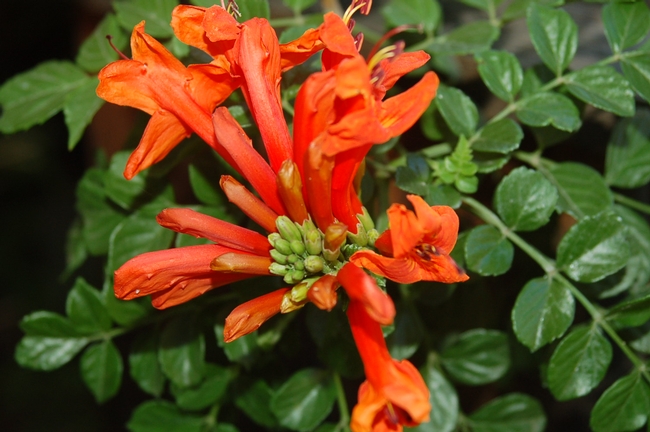Posts Tagged: honeysuckle
Light Up the Fall
It’s finally the time of year for Cape honeysuckle (Tecomaria capensis) to show its stuff! Throughout fall and winter Cape honeysuckle produces clusters of brilliant red-orange to scarlet tubular flowers, each about 2 in long. Its year-round evergreen nature is always nice in the background but that red-orange really lights up darkening fall and winter gardens.
The sprawling, vivid green shrub is fast growing and can become 15 feet tall in a hurry. The 5-7 diamond-shaped leaflets are toothed and about 2 in long. The flowers add vivid color to fall and winter gardens. Pruned to maintain as a shrub, it can reach 10 ft. or more in height and half in width. If left to scramble, Cape honeysuckle can cover 25 ft. or more.
Regular pruning, hard if necessary, will keep it healthy and looking good. It can also be trained as a vine, thriving in zones 9-11. It likes it warm and appreciates full sun for much of the year, along with regular water. It’s moderately drought tolerant once established.
A native of South Africa, Cape Honeysuckle can sprawl and run rampant without at least some care. Branches that touch the ground, for example may root there, so gardener beware. They’re easy enough to remove.
Full sun is best, but light shade is tolerated. ?Cape honeysuckle is hardy to USDA Zones 9 - 11 and 26º. ? Propagation can be achieved with softwood cuttings at any time of year and by seeds.
October is when I first see them in my yard and for the past week I’ve enjoyed their debut. I‘m on my way out now to see how many new blossoms have arrived since I last looked!


